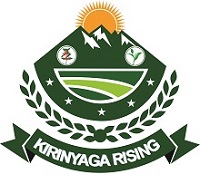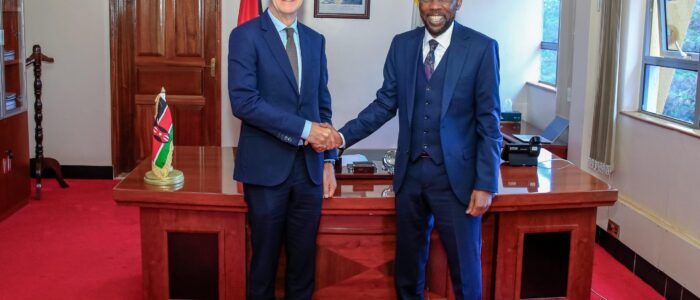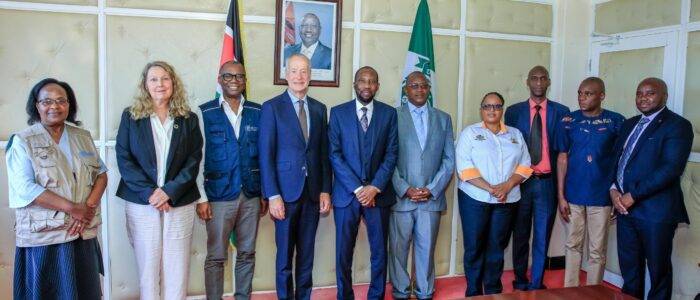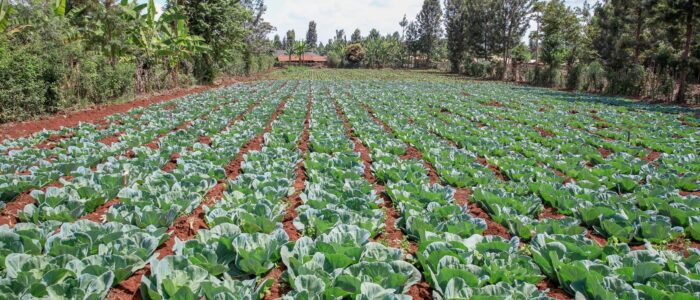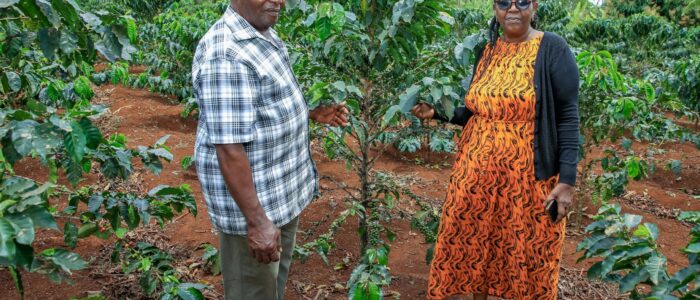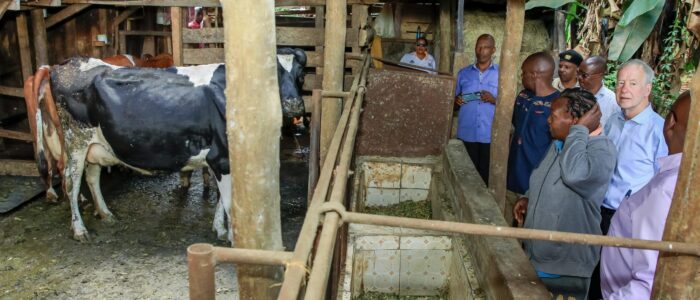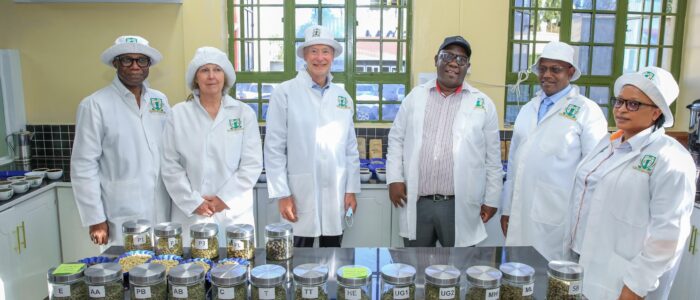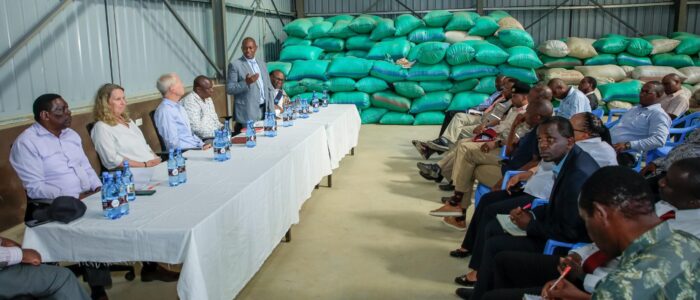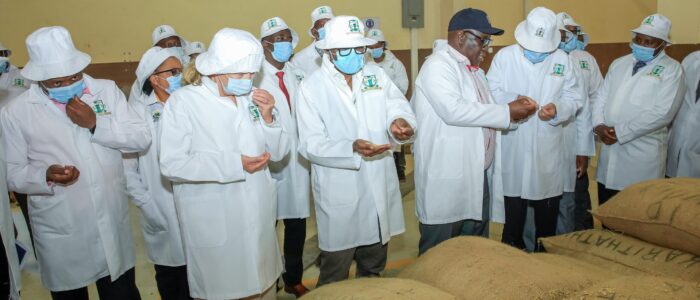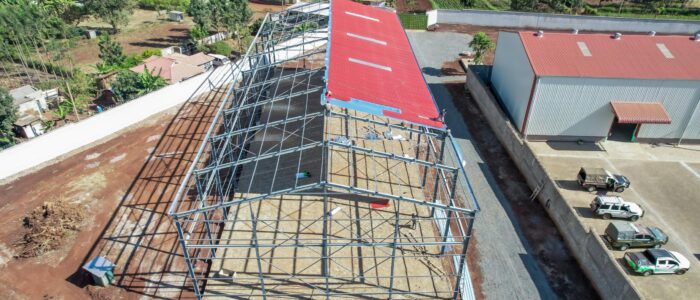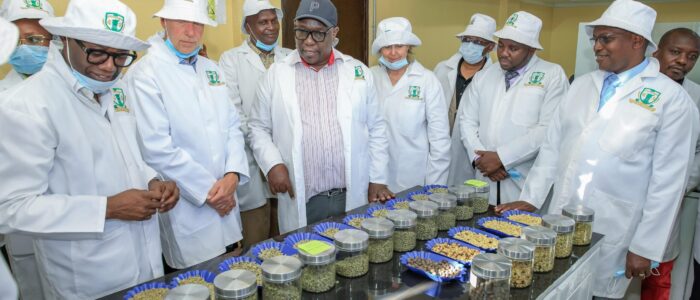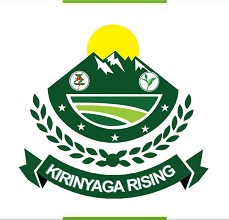Kirinyaga sets pace in digital agriculture as Swedish Embassy and FAO endorse county’s drive
Kirinyaga County has emerged as the model of digital agriculture in Kenya, with over 135,000 farmers already registered on the Kenya Integrated Agriculture Management Information System (KIAMIS).
On Monday, Swedish Ambassador to Kenya, H.E. Håkan Akesson, and senior Food and Agriculture Organization (FAO) officials toured the county to assess progress. Kirinyaga was the first county chosen to demonstrate how technology is transforming farming reducing costs, boosting yields, and increasing household incomes.
Ambassador Akesson hailed the county’s progress, noting that Sweden has supported Kenya’s agricultural sector since the 1960s.
“We are proud to work with Kirinyaga and FAO in this digital era. Farmers can now register, access subsidized fertilizer, and receive timely information. That brings transparency, accountability, and efficiency,” he said.
The envoy noted that Sweden has supported Kenya’s agriculture since the 1960s and has invested over USD 5.5 million in the digital program.
Kirinyaga’s County Executive Committee Member for Agriculture, Dr. John Gachara, described the reforms as a “digital agrarian revolution.”
“We have only 4,000 farmers left to register. Our farmers now receive inputs at subsidized rates and can query services without waiting for officers to visit. This is the future of agriculture driven by data, powered by technology, and centered on the farmer,” Dr. Gachara noted.
Through Governor Anne Waiguru’s Wezesha Kirinyaga program, the county farmers have over the years received massive support to increase agricultural production, value addition, processing as well as market linkages. The digital revolution has therefore come as a boost to the program whose ultimate goal is to increase incomes for the farmers.
FAO’s Kenya Representative, Charles Bebay, said the collaboration with Kirinyaga has proved the value of digitization. “Through the e-voucher system, farmers get fertilizer at 40 percent discount. That reduces costs, increases yields, and strengthens resilience. What we see here in Kirinyaga is how digitization changes lives on the ground,” he noted.
FAO Programme Officer, Wilfred Oluoch, highlighted the county’s contribution to national progress.
“In 2023, Kenya had 6.5 million farmers registered. Today, the figure is 6.9 million. Kirinyaga alone accounts for 135,000. This data is helping us channel subsidies, link officers to farmers, and deliver services efficiently,” he explained.
Farmers in Kirinyaga are already seeing the benefits. Freshia Wambui, a coffee, maize, beans and cattle keeping farmer in Inoi ward said digital registration has made inputs both cheaper and easier to access
“I used to pay Ksh 7,000 for a bag of fertilizer. Now, I buy it for Ksh 2,500. I also get alerts when supplies arrive. My yields are higher, and my family has more income,” she said.
Beyond cheaper fertilizer, the system is linking farmers to markets, promoting climate-smart practices, and ensuring real-time communication between extension officers and households. The county is also using digital soil mapping to help farmers apply the right fertilizers and improve food production.
Officials said Kirinyaga’s success proves that digitization is not just about technology, but about building resilience, empowering farmers, and securing food security for the county and the nation.
